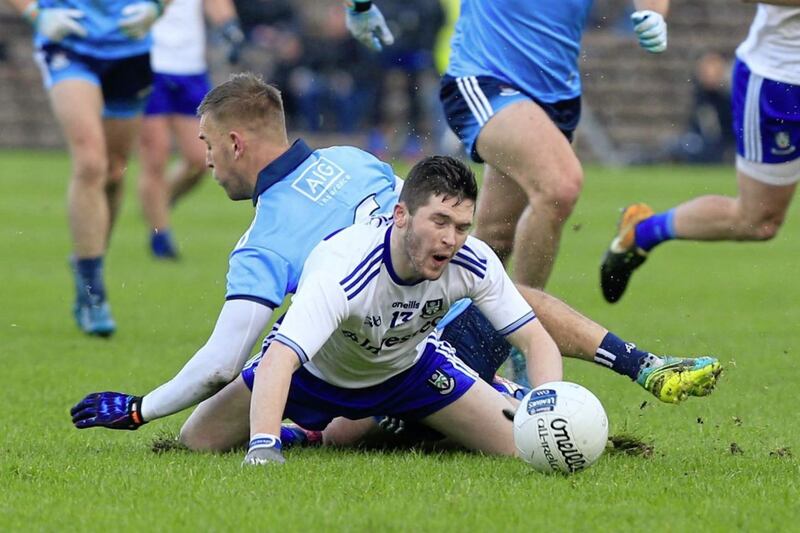IN the Second Captains podcast last week, host Ciaran Murphy joked that RTÉ were showing the Cavan final because nobody in the county would pay for a live stream.
It was harmless and in good humour, but reflected Cavan’s place in the football world for the last few decades – it’s just not taken very seriously.
When RTÉ announced they were showing Crosserlough and Kingscourt, a decision that came about because Kerry turned down coverage in favour of charging for their own live stream, the public reaction was a giant shrug of the shoulders.
The county has become a forgotten land. Not northern enough for the northern media, not Leinster enough for the Dublin media, most of the looking in is from a distance.
Since Joe Brolly labelled them The Black Death in a newspaper column in 2014, the perception has stuck.
“They have continued to play the most horrible, defensive football the game has ever seen, oblivious to the trend towards attack based, non-fouling football,” wrote the Derry man at the time.
Yet under all our noses has developed a club championship that has provided more county final drama than any other in Ireland the last decade, and has followed its county team in catching up with the trend.
Crosserlough and Kingscourt were just the ones who got the chance to provide the evidence in open court.
Theirs was the second drawn decider in four years. Since 2012, they’ve had two draws, four finals decided by a point and two more decided by two points. Mullahoran won by four against Kingscourt in 2012, but only because of 59th minute goal.
For tight finals and unpredictable winners, only Tyrone can match it in Ireland.
If Crosserlough were to get across the line in Saturday’s replay, they would be the seventh different club to win it in the last nine years.
And it’s being done the right way. Gone is the defensive stigma. In the seven knockout games alone, there were 20 goals, an average score of 2-13 and two bouts of extra-time.
“Defensive football has really gone in Cavan,” says Paul Fitzpatrick, sports editor of the Anglo Celt newspaper.
“If you look at the scores in senior championship this year, it’s unbelievable. It’s all-out attacking football in Cavan now. The stereotype of Cavan being defensive isn’t accurate. It hasn’t been accurate in five or six years.”
The variation and novelty around Cavan club football in the last decade has contributed massively. It is a county that is used to dynastical reigns. They’re long overdue one.
Since Crosserlough’s famous seven-in-a-row began in 1966, there have been two dominant spells for Cavan Gaels (1975-78 and 2001-2011), and runs for Laragh United (three-in-a-row 1982-84), Kingscourt (six from 1986-93) and Gowna (six from 1994-2002).
The period since Killygarry stunned Cavan Gaels in a 2012 quarter-final has been the most open in Cavan’s history. The Gaels have won two titles since but, despite the bookmakers eternally lumping the favourites’ tag on them at the start of every season, they are nowhere near the force of old.
They also find the walls closing in around them. Much of population has moved out of Cavan town and in satellite areas like Killygarry, Butlersbridge and Ballyhaise, the clubs sprout with the Gaels shrink.
“Take Killygarry, they have three national schools and a lot of those are people who have moved out of the town,” says Fitzpatrick, who says the influence of a strong ladies' football team also helped drive the men's division.
“These clubs are coming up stronger and the Gaels’ pick is limited now compared to what it used to be.
“Ramor looked like the next superpower, they’re the nearest club to Dublin and a big population in Virginia. It has rocketed. At one stage I think it was the fastest growing town in Ireland.
“They have big numbers, they were entering two teams at underage grades, and got in ahead of the curve. They arrived in 2016 and won it, but haven’t kicked on yet.
“Virginia, Ballyjamesduff, that area of the county got a big population influx as well and that fed into Castlerahan.”
The tectonic plates are ever-shifting beneath their feet. Where Ramor looked the next kingpins four years ago, they’ve only been back to the final once.
Crosserlough have the age profile to earn the same predictions, but they need to get over the line in what is their seventh final appearance since their last success in 1972, the last of the seven-in-a-row run.
The Oliver Plunkett Cup has been thrown around the county for almost a decade and with just 60 minutes left of this year, nobody is any the wiser as to where it will bed down this winter.
And when they come back out of hibernation, next year will be the same as last year.
Rather than a black death, Cavan football has new life.
The rest of us might even pay for a stream if this keeps up.







